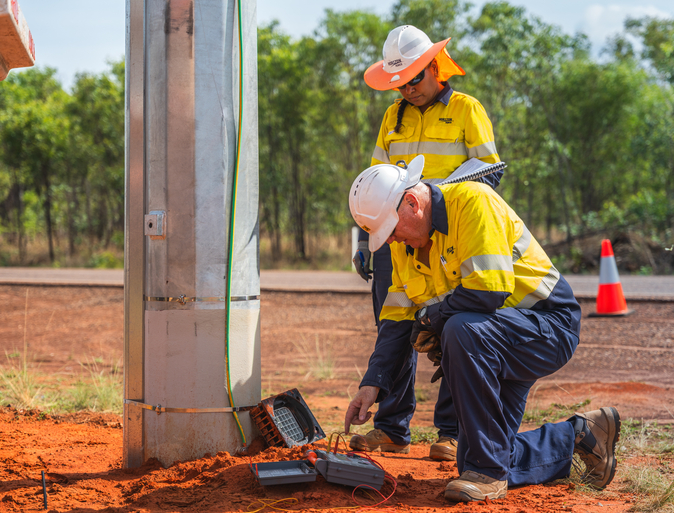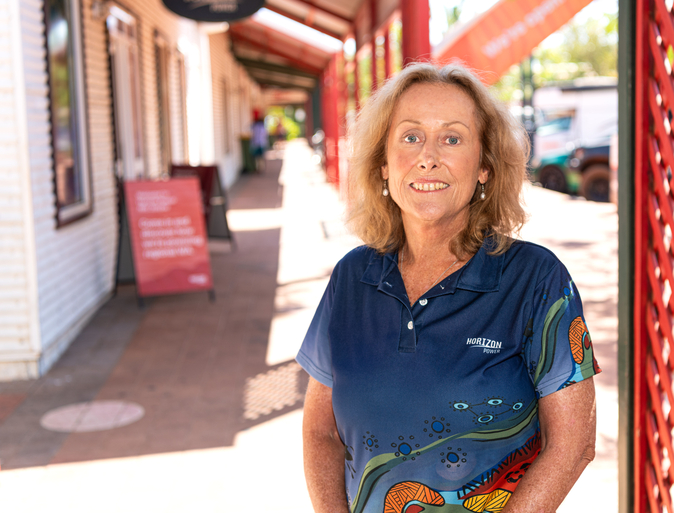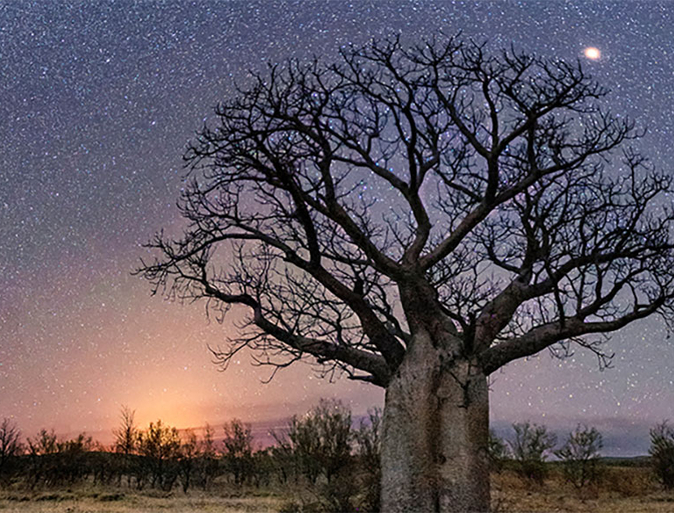
How does Looma and Camballin's current system work?
Looma and Camballin’s current energy system relies mainly on diesel generation, with only a small portion of the communities’ energy needs met by renewable sources such as rooftop solar.
This diesel-based system produces significant CO₂-equivalent emissions each year, highlighting the opportunity to transition to cleaner, more sustainable energy solutions for the community.
Community engagement
Communities are at the heart of our Future Energy System planning framework and ensure active participation among all stakeholders, including residents, Traditional Owners, businesses, and community groups throughout the process.
We consider community aspirations, existing infrastructure, and factors like land, heritage, and the environment to align planning with Looma and Caballin's unique characteristics.
Our approach includes informing, consulting, incorporating input, and communicating back to the community. A range of engagement methods will be used ensuring all stakeholders have an opportunity to contribute.


What's happening now?
We’re in the future energy systems options analysis phase. This includes financial assessment, market testing, engineering, land assessments, stakeholder engagement, project management, environmental and heritage due diligence activities.
We’ll continue to share updates and consult the community as planning progresses.
-
Why did we choose Looma and Camballin for the Future Energy System?
Horizon Power is supporting the State Government’s commitment to reduce public sector emissions by 80% by 2030 and reach net zero by 2050. To help achieve this, we’re prioritising towns with higher carbon emissions that currently rely on diesel-powered generators.
In Horizon Power’s service area across regional and remote WA, Looma and Camballin are among the communities we're transitioning to cleaner energy and make a meaningful difference in reducing emissions.
Planning for a new energy system is complex and takes time. Each solution needs to be carefully designed to suit the specific needs of the community, which is why we started early conversations with residents, Traditional Owners and local stakeholders.
-
What renewable energy does Lomma/Camballin already have?
Through the deployment of Smart Connect Solar, supported by our Distributed Energy Resource Management System (DERMS), Looma and Camballin residents and businesses can now install rooftop solar safely and efficiently. This technology allows the community to participate more actively in the energy transition and helps increase the town’s renewable energy capacity as we work toward reducing reliance on diesel.
-
How does this affect me?
Communities are at the heart of our Future Energy System planning framework, and all members of the community are invited to provide their feedback.
-
What renewable sources will be considered for Looma and Camballin?
A decarbonisation solution looks at cleaner energy sources such as solar and wind generation, coupled with battery energy storage solutions and consideration must be made to ensure the products are technologically and commercially readily available. In the initial stages of the project, we’ll assess which of these generation types are most viable for the community’s energy requirements.
As we progress the solution design for the future energy system, the technical considerations and economic viability may mean that some generation types cannot be part of the final solution. For example, wind is no longer an option for Looma and Camballin's future energy system
Community engagement helps us understand each town’s appetite for renewable energy, and feedback will inform the final solution. It’s important to note that while the new system may reduce reliance on fossil fuels, thermal generation may still play a role in meeting demand and supporting reliability during periods of low renewable generation or other challenging conditions. -
What is Future Energy System Planning?
Future Energy System Planning is a public process in which Horizon Power works together with our communities and stakeholders to identify and explore energy options to shape their future energy system.
We engage and inform local communities, Local Government Authorities, Traditional Owner groups and key stakeholders to determine long-term energy solutions that best meet their needs. This includes seeking support on acquiring land on which to build the generation facility. We work to balance the demand, reliability and future energy needs of our towns with the voices and opinions of those who help make it a community. -
Do you intend to acquire land for this project?
Yes. The availability of land that can be used is a crucial factor in determining the future energy solution.
Renewable generation facilities such as a wind or solar farm require far larger footprints of land compared to a diesel- or gas-powered facility. The amount of land available determines the percentage of the town’s energy generated from renewable sources.
If we are unable to acquire land, we substantially reduce the amount of renewable generation options available for the town. -
When are we likely to see this project delivered?
Planning for a future energy system is complex and takes time and community engagement to gather opinions and thoughts. If the recommended system is approved for delivery, construction would likely commence in 2028.
-
Will the delivery of this project mean less outages?
The future energy system will not have a direct impact on outages. Outages are primarily driven by unpredictable weather events and wildlife interactions.
-
Does this mean my power bills will reduce?
Your current power bills are set by tariffs that are heavily subsidised by the government. Introducing renewable energy generation as part of this project may reduce the cost of serving the community but will not directly affect your bills.
-
Does Horizon Power intend to recycle any of its assets such as solar panels and batteries?
During the procurement process, Horizon Power will assess contractor efforts in recycling materials. We investigate how a contractor sources, and disposes of, the renewable components to be used in the construction of a renewable energy facility.
What's happening and when?
Here's a high level timeline of what to expect, subject to change as the project progresses.
April to July 2023
The project team is formed, planning and preparation work begins.
Aug to Sept 2023
Community engagement
We host local community sessions and present at regional events so you can learn more about the project, ask questions and provide feedback. If you have something to say, please get in touch via the contact form on this page.
Aug 2023 to Jan 2026
Financial assessment, market testing, engineering, land assessments, stakeholder engagement, project management, environmental and heritage due diligence activities will occur.
Feb 2026
Project recommendation
Horizon Power Executive will review the project's recommendation and make a decision on the path forward.
2026 to 2027
Future Energy System Plan Implementation
Includes return to market for detailed design and final generation solutions, commercial negotiations and approvals (inc. environmental approvals)
2027
Project recommendation
Horizon Power Executive will review the projects recommendations and approvals pathway for Final Investment Decision.
2027 to 2028
Design & Deliver Future Energy System
This stage includes final design, construction, installation and commissioning of the future energy system.
2029 to 2030
Project completed
The future energy system and supporting infrastructure will be operational, providing long-term, reliable, safe and sustainable power to your town.
We have four shortlisted vendors from suitably qualified and experienced organisations interested in entering into a long-term Power Purchase Agreement (PPA) to supply Horizon Power with electricity in the towns of Broome, Derby, Halls Creek, Fitzroy Crossing & Looma-Camballin through a closed tender process.
Horizon Power acknowledges the Traditional Custodians throughout Western Australia and their continuing connection to the land, waters and community. We pay our respects to all members of the Aboriginal communities and their cultures; and to Elders past, present and emerging.
Aboriginal and Torres Strait Islander people are advised that this website may contain images, names or voices of deceased people.